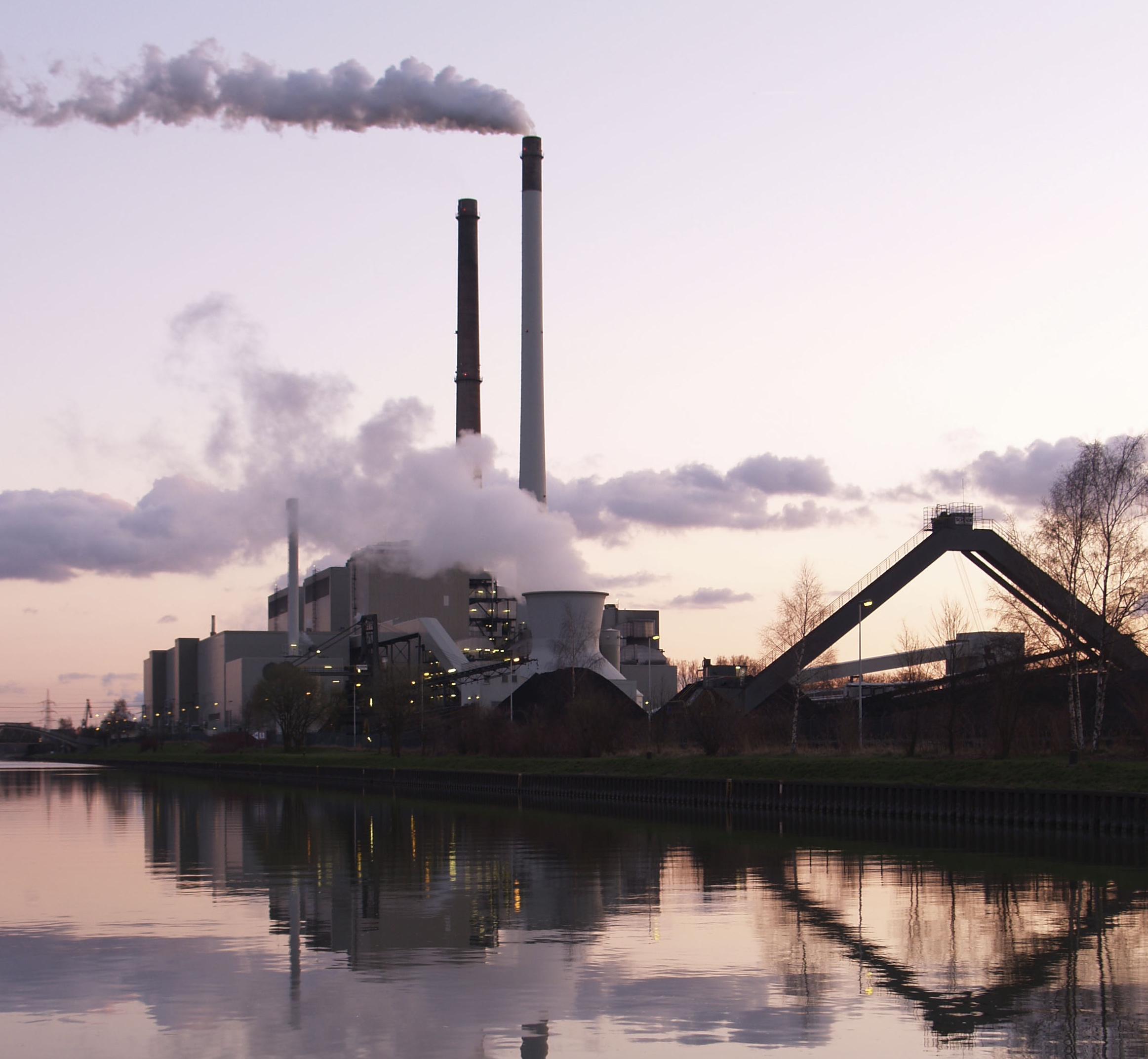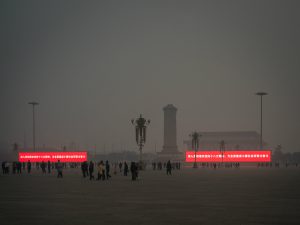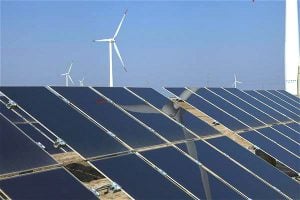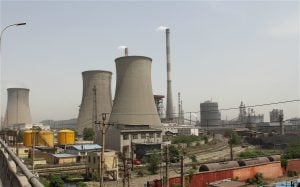China’s aim is to cover 4 billion tonnes of emissions (of carbon dioxide equivalent, or CO2e) in its national carbon market from “early 2017”, making it by far the world’s biggest greenhouse gas trading market. China intends that all the provinces will be covered under the scheme from the outset.
We argue that this grand goal is subject to China’s legislative process and technical capacity from private sectors, and major issues need to be addressed before a functional nationwide market is plausible. We expect Chinese carbon regulators will miss the target and a national market covering all provinces will not take shape in the next 24 months.
At this point, it’s worth posing the question why a rollout of China’s carbon trading scheme matters. Firstly, it has almost become a cliché that carbon emissions will only drop when China cuts coal consumption, a step that echoes the nation’s more urgent combat against air pollution.
In addition, in the aftermath of the Paris climate agreement, the roll-out of the national scheme can also enhance the transparency of China’s climate change policy implementation, which will inevitably scrutinised by the international community before a ‘global stocktake’ of countries emissions in 2018.
And thirdly, if we look at China’s economic development during the last 30 years, it is evident that the country’s most competitive and proliferating sectors are those driven mainly by market forces and competitions instead of state controls.
China’s plans for a national carbon trading scheme came under sharper focus at UN climate talks in Paris, and the main news to come from the China pavilion was comments from a top climate change official that the national carbon market will start early 2017. Specifically, the market will cover all the provinces and nearly 10,000 companies from six sectors and 15 sub-sectors.
Another Chinese official also said in Paris that the carbon market has to be “tight” to be meaningful to China’s emissions reduction pathway. But we are asking: how likely is it for Chinese authorities to launch a tight carbon market covering 10,000 companies by 2017?
Is political support sufficient for a successful scheme?
Globally, China’s political support for carbon markets is only matched by the EU. The prospect of a national carbon market has drawn media attention since June 2013, when the first pilot started in Shenzhen. To launch its national scheme by early 2017 China has less than 18 months to finish all of the building blocks to implement a meaningful carbon market.
While there is no doubt that all relevant regulatory bodies support the establishment of a national scheme – especially since President Xi Jinping backed it in September –a heavy of workload needs to be completed to process legislative formation after the grand target is announced.
To begin with, any scheme in China requires an official legislation to be enforceable. Although a draft regulation was leaked in September 2015 right before President Xi’s visit to the US, it was rather abstract and lacked detailed market specifications. Generally speaking, the carbon legislative process is at best murky to outsiders, even without a tentative timeline.
Theoretically, the legal effect of the carbon market depends on the exact form of the legislation adopted, and there is no guarantee that carbon legislation will be in the same form as the drafted regulation. Draft carbon regulation is vague on how the carbon market will operate and when it will be implemented.
However, two certainties can be highlighted.
The legislative process is likely to be lengthy as it involves various regulatory bodies, probably spearheaded by the National Development and Reform Commission (NDRC), and with involvement of the Ministry of Finance to the China Securities Regulatory Commission. In addition, any uncertainties or structural changes within any of the relevant government bodies may inevitably delay the law-making process.
From an optimistic perspective, however, the authorities may go swiftly through the legal formation process, which will clearly be the biggest political impediment to a 2017 national carbon market.
Nevertheless, the legislative process is by no means the only political challenge faced by the authorities. One top climate change bureaucrat in the NDRC has said the cap of the national scheme will be more stringent than the country’s overall emission intensity reduction targets for 2020 and 2030.
This sounds reasonable, and is similar to the case in the EU ETS in which covered sectors (power generation, heavy industry) also face higher reduction targets than sectors outside the carbon market (such as transport and agriculture). In reality, it is rather complicated to set both the stringency of the overall market and to distribute allowances among the 15 sectors slated to be covered by the market.
Since 2014, the NDRC has demanded companies in more than 10 sectors to start submitting emissions data. Once again, the actual implementation on the ground and compiled data reported to the central government are both outside of public scrutiny.
Experience from other mature carbon markets such as EU ETS has proven that without sufficient quality of historical emissions data, the market is prone to be over-allocated. In sum, the allocation process – key element in any carbon scheme – is subject to many uncertainties.
Therefore, many questions marks are yet to be answered about how a high level market will be set, though the political support is here to stay.
Market distortion?
It is well-known that in China government policies are subject to abrupt changes that are often in force immediately after publication. As a policy-derived market, carbon is especially vulnerable to this.
Already offsets buyers in Tianjin swallowed a bitter pill in May when local authorities unexpectedly issued a notice that scrutinised eligibility of carbon offsets in the local pilot two months ahead of the compliance deadline.
There is speculation that some companies purchased ineligible offsets before the notice, though no subsequent official announcement regarding the offsets submitted for compliance was made to the public after the compliance deadline.
Presumably, the national carbon market will display more political certainties than the current fragmented pilots to market players.
Before the national scheme goes operational, however, no one can ascertain that similar drama won’t be repeated in the run up towards the scheme’s launch. This uncertainty can substantially jeopardise market confidence and thus deter interest in the carbon sector.
From the pilot schemes, another lesson is to take official words – even those inked on papers – with a grain of salt.
One case in point regards auctions in the existing pilots. Despite being mentioned in several pilots as a supplementary source of allowance allocation, only the Guangdong pilot held auctions during the second compliance year, and even there the auctioned volumes were watered down from previous announcements due to poor market reception.
Since such underlying risk is ingrained in the overall political environment in China, we foresee little to be changed in the Chinese national scheme.
We expect to see relevant announcements from Beijing to justify the environmental integrity of offset projects and clarify the issues of double-counting and forestry credits in the national scheme.
No doubt, further policy decision making will also take into account the interest of relevant bodies such as the country’s renewable and forestry sectors.
For now, it is worth noting that some – if not many – of the existing offset projects in the pipeline are already facing the risk of being ‘stranded’, or in broader terms, rendered close to worthless because of potential oversupply and eventual market regulation.







